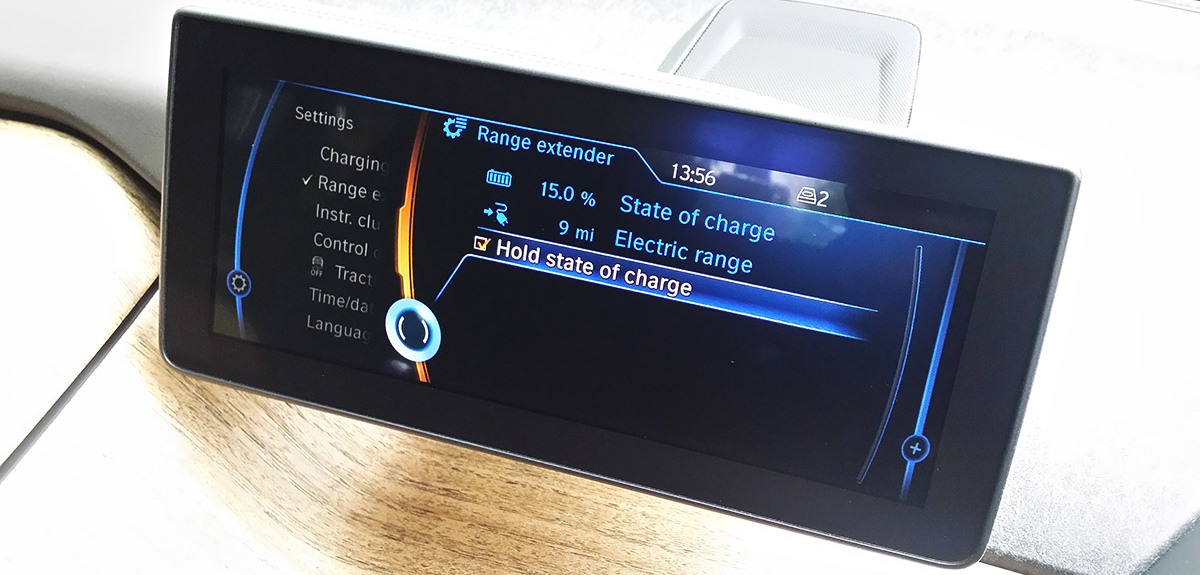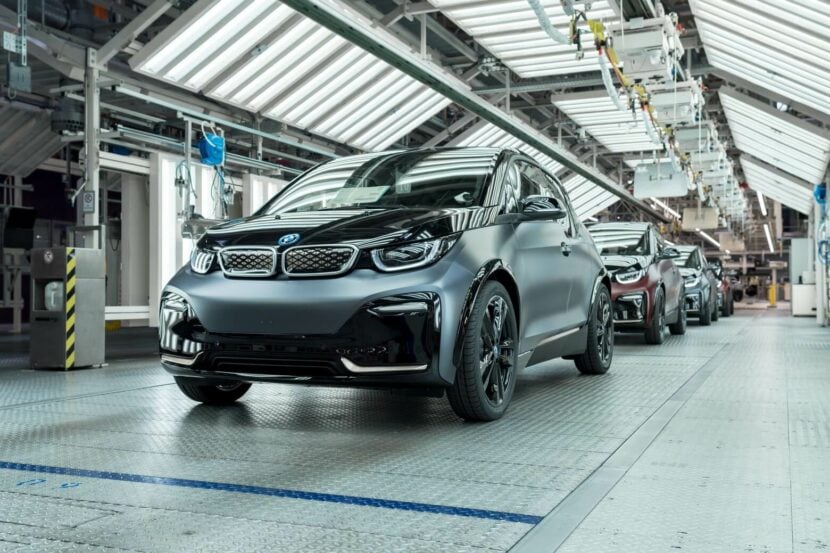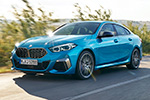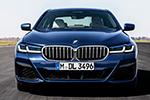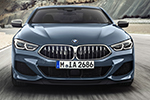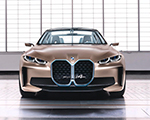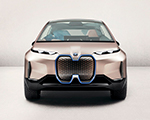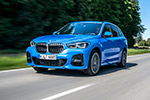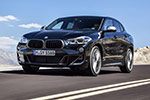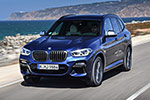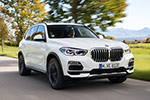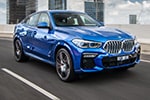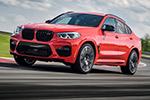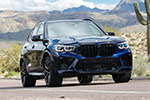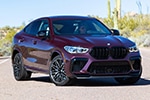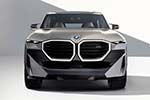Recently news has spread of a class action lawsuit filed in the state of California by MLG Automotive Law alleging that the BMW i3 REx is dangerous and “can result in a catastrophic situation for all those on the road.” This, in my opinion, is grossly misleading. However in fairness, to say the vehicle can be driven like any other car while the range extender is in use is also grossly misleading. To understand the juxtaposition of those two statements takes some explanation.
The truth is, the plaintiffs aren’t making this up. What they are describing in the lawsuit is called “Reduced Power Mode” and it can happen under certain strenuous circumstances when the vehicle continues, for a prolonged period, to consume more power than the range extender can provide. In this post I’m going to attempt to explain why and when this can happen, how this became an issue, and what could have been done to prevent it from getting to the point of a lawsuit.
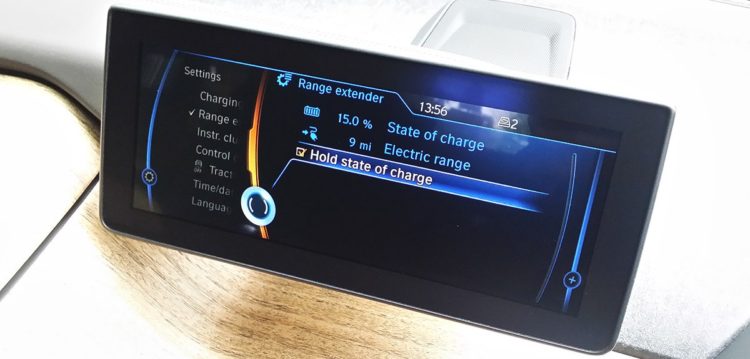
Far and away the most misunderstood aspect of the BMW i3 is its range extender. Ever since early February 2011, when BMW’s Financial Officer Frederick Eichinerto announced that the i3 (then known as the Megacity Vehicle) would have an optional gasoline motor to extend the vehicle’s range, there have been questions. I remember early adopter electric vehicle enthusiasts speculating over the potential efficiency and power output of the motor on numerous online forums and EV news sites. I was in fact, one of them.
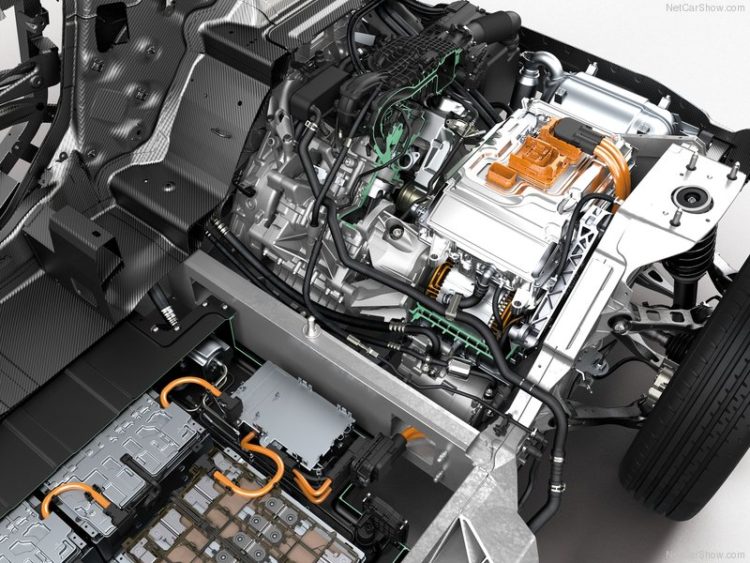
Fast forward to 2016, two and a half years after the i3 launched and most people still don’t really understand the i3’s range extender. That’s because it’s different than anything on any other car sold. No other OEM before or after has offered an optional range extender on an electric vehicle, allowing the customer to decide which form (BEV or extended range PHEV) better suits their personal driving needs. BMW designed the vehicle with as small, as efficient, and as light weight a range extender as they could, while still delivering the power necessary to perform its task. The problem is, it’s unclear to many owners what exactly its task is, and therein lies the rub.
If you ask BMW, they’ll tell you the range extender is an APU (auxiliary power unit), and its primary function is to extend the range of the vehicle, in order to get the driver home safely or to the next charge point, without worrying about being stranded with a depleted battery. The range extender is not a fully capable large engine, as found in series-hybrid type vehicles such as the Chevy Volt. Vehicles like the Volt can run indefinitely without the need to ever actually plug it in to charge it, while the i3 REx, cannot. However it’s unclear if the majority of i3 REx customers actually realize that. It seems many believe the i3’s range extender is supposed to operate like the Volt’s range extender, to power the vehicle as long as necessary and under any circumstance needed, and that’s simply not the way BMW engineered this vehicle. BMW i3 product manager Jose Guerrero once said he viewed the range extender as being “almost like training wheels for the BEV.” I’ve spoken to Guerrero extensively about this, and he’s consistently referred to the range extender as a backup system which is meant to keep the driver from having range anxiety, and worrying whether or not they’ll make it home.
The i3 was the first, and still is the only vehicle that is classified by the California Air Resource Board (CARB) as a “BEVx” vehicle. According to CARB, a BEVx vehicle is,”a relatively high-electric range battery-electric vehicle (BEV) to which an APU is added.” Additionally, the vehicle must meet the following criteria:
- The vehicle must have a rated all-electric range of at least 75 miles
- The auxiliary power unit must provide range less than, or at most equal to, that of the battery range
- The APU must not be capable of switching on until the battery charge has been depleted
- The vehicle must meet “super ultra low emission vehicle” (SULEV) requirements
- The APU and all associated fuel systems must comply with zero evaporative emissions requirements
I highlighted the third line because this is really the crux of the issue which has caused this class action lawsuit. BMW designed the software on the i3 to allow the customer to manually turn on the range extender once the state of charge was below 75%, recognizing the occasional need to hold back extra energy in the battery pack for later in the journey when they would need it. By selecting this “Hold Mode”, the range extender will turn on and hold the state of charge at that level, or close to it, depending on the current power draw. The Chevrolet Volt has a similar feature to accomplish the same result which is to reserve electric power for later in the journey when the driver expects they may need it. Because of this, a Volt can climb any mountain road in North America without issue, as long as the driver properly uses this feature.
However, if BMW allowed the i3 REx customers in California to have access to a REx hold mode, the vehicle wouldn’t qualify as a BEVx vehicle. It would then be classified as a plug in hybrid (PHEV) in the Transitional Zero Emission Vehicle (TZEV) class. In that case, BMW would lose thousands of dollars in zero emission vehicle credits for every vehicle sold, because BEVx vehicles are treated as pure battery electric cars, and thus get the maximum ZEV credits. Of course BMW could have placed the restrictions only on the cars they sold in California and other CARB states to qualify as a BEVx, and sold the car everywhere else with a hold mode as they do in Europe, but it was explained to me that they didn’t believe selling the car which operated differently in different states in the same country was prudent. So in order to comply with the BEVx rules, BMW modified the software on all cars sold in the US. This modification eliminated the hold mode option. The range extender therefore only turns on when the state of charge is 6.5%, and the driver has no control over it. They also had to limit the amount of gasoline available from 2.4 gallons to 1.9 gallons to make sure that the all electric range was less than the range while running on gasoline, another criteria of the BEVx classification. So even though the gas tank could hold 2.4 gallons, only 1.9 gallons is available to the driver. This modification caused the delay of releasing the range extended i3 to the US customers back in 2014. I was one of the customers whose car was held up at the port so BMW could modify the software, and print the Monroney label for the window.
Even though the range extender turns on at such a low SOC, the little 34hp motor can keep up with the power demand under most conditions. I’ve driven my i3 REx on quite a few trips which covered hundreds of miles without any issue, even though it wasn’t ideally designed for that type of use. It’s been my experience that I can set the cruise control for 70 mph and the range extender can supply the needed power to allow me to drive indefinitely on relatively flat terrain, even climbing a few hundred of feet in elevation from time to time. However, I’ve noticed if I drive faster than 70mph after a while the state of charge will erode, and the possibility of the car entering reduced power mode is introduced. For that reason, whenever I’m driving long distance on the range extender I keep an eye on the SOC, and slow down a little when I begin a long, sustained climb. For me, the beauty of the range extender is it means I never have to worry about coming up short on range. If I pull up to a public charging station and it’s broken or being used, I can still continue driving without having to drastically alter my plans.
Where I live and drive the terrain is relatively flat, and as such a hold mode isn’t really as necessary. However driving in areas that have long sustained climbs, especially where the vehicle will be traveling at highway speeds, the operator could certainly benefit from a hold mode. This would allow the driver to engage the range extender at a higher state of charge, reserving the extra energy needed to complete the climb.
Despite calls from some armchair engineers, in my opinion the i3 doesn’t need a larger engine. Doing so would add weight and reduce efficiency. The 650cc engine is fine for just about any use, the only exceptions being prolonged high speed (over 70mph) driving, and long, sustained hill climbs which are many miles long at highway speeds. European i3 owners don’t seem to have any issues because they can switch the range extender on early if they believe they will need the extra battery reserve at a later time in their journey. So what can US i3 owners do to alleviate the problem? Many have resorted to coding their car which will restore the hold mode. It’s a relatively simple procedure, but one that can possibly void the vehicle’s warranty. Although whether or not doing so can void a new vehicle warranty has been disputed by some in the vehicle coding community. Coding the car not only restores the hold mode, but can also allow full use of the car’s 2.4 gallon gas tank.

I’ve never coded my i3, because I’ve never had the problem of the car going into reduced power mode. I understand the limitations of the range extender, I watch my state of charge and if I see it getting dangerously low I simply slow down a little. That said, I do understand that many owners don’t know how the REx works, and expect it to be able to do anything, under any condition, which it cannot. The APU isn’t a large engine that one would expect to find in a car. It’s actually a BMW scooter engine which was modified to act as a generator for the i3. That said, with the proper use of a hold mode, the vehicle is capable of climbing any mountain road in North America, as proven by i3 owner and engineer John Higham, when he set out to prove just that by climbing 7,228 feet to Donner Summit in Lake Tahoe last year. John proved the i3’s engine is robust enough to power the car up any incline at highway speeds, as long as the operator had access to, and properly used a hold mode.
So what’s the problem? Why doesn’t BMW just sell the car in the US as they do in Europe, and allow the hold mode and solve the problem. They may eventually have to if the lawsuit is successful, but until they are forced to as mentioned before, it’s all about the extremely valuable CARB credits. BMW (along with Chrysler and Volkswagen) lobbied hard to convince CARB to create the BEVx class in the first place. GM was right there with them, but was unsuccessful in trying to convince CARB to relax the criteria enough to allow the Volt to also qualify. The difference between being classified a BEVx vehicle as compared to a PZEV may be as high as $10,000 per vehicle, although that’s only an estimate I got from someone familiar with the CARB credit valuation. I don’t personally know the exact amount, but I do believe it’s many thousands of dollars per vehicle. When you consider BMW has sold nearly 15,000 i3’s with the range extender in the US already, you can see how the BEVx qualification may have netted BMW over $100,000,000 already.
It’s clear people are buying these cars without really understanding how they work and what the limitations may be, and this lawsuit only further proves that point. I highly doubt many i3 owners in the US even know BMW purposely restricted software that the car has which allows for manual operation of the range extender, and I’m sure the people behind the lawsuit had no idea the car could enter a reduced power mode under certain conditions when they bought it. There’s a clear disconnect between BMW and the customer with regards to how the range extender functions, and what its purpose is. Is it an APU designed to keep you from being stranded with a flat battery, or is it a dual-fuel system which allows you the freedom to go wherever you want and at any desired speed? There’s really nothing else on the market quite like the i3’s range extender, so it’s really important that the customer has access to the information necessary to understand how it works. This lack of understanding has been simmering for two years and it’s now come to boil in the form of this class action lawsuit.
So is it all BMW’s fault? Is this simply a case of a greedy manufacturer putting their customer’s lives at risk in order to line their pockets cash? I don’t think describing it that way does the whole situation justice. BMW obviously has to take the majority of blame for this resulting in a lawsuit, but to say it’s all their fault isn’t correct. There’s plenty of blame to spread around if you really want to be fair. Here’s how I see it:
BMW
It’s clear the majority of blame has to fall on BMW’s shoulders. They built an electric vehicle that was really unlike any other. They included software to allow the operator to turn the range extender on early if they felt they needed to. However, for the US market they disabled that software in order to comply with the California Air Resources Board’s strict BEVx criteria. BEVx is a category of electric vehicle that BMW lobbied CARB to create in the first place, and gives the manufacturer full ZEV credits, even though the vehicle burns gasoline in some conditions. It’s the only vehicle in the US that is capable of burning gasoline, but is still treated as a pure ZEV by the California Air Resource Board.
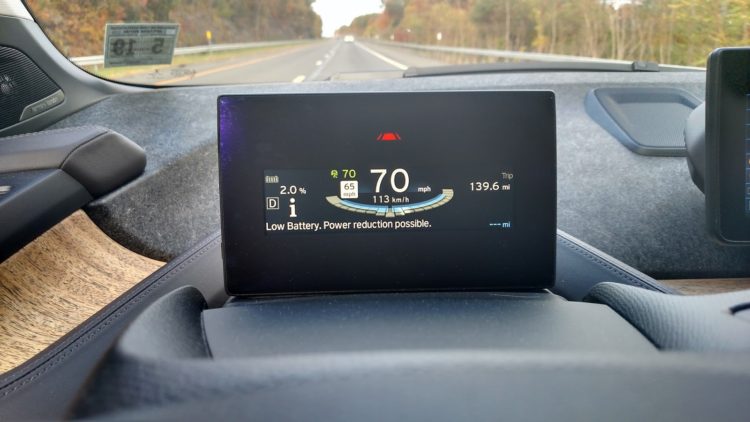
When the i3 REx was first released, the driver had no warning before the vehicle went into reduced power mode. One minute you’d be cruising along at highway speed, and suddenly it would slow down drastically because the range extender couldn’t keep up with the power consumption. Less than a year after the i3 launched in the US, BMW made a software modification to help warn the driver before the car went into reduced power by adding audible and visual alerts.
BMW has provided their dealer network literature to help them understand how the REx works. They have also held BMW i certification training programs, which were deep-dive, extremely informative training sessions for the i3 & i8. The information is there, but does it reach the customer? In most cases I’m afraid it doesn’t. BMW’s share of the blame: 50%.
CARB
CARB created the BEVx classification with the hopes of increasing the amount of miles driven on electricity. They view the BEVx vehicle as one that fits a category between plug in hybrid electric vehicles (PHEVs) like the Chevy Volt, and pure battery electric vehicles (BEVs). The goal for BEVx was to increase the amount of miles driven on electricity from 80% (that of an average PHEV) to over 90% and be a “Transitional Vehicle” between ICE and pure BEV. (John Higham went deep into CARBs BEVx classification reasoning in this 2015 post.)
However in doing so, they created criteria so onerous that no manufacturer other than BMW has made a vehicle that fits the stringent rules of the classification. In fact, in order for the i3 to qualify for this category BMW had to disable features that actually prevent i3 owners from using the car more often! The restrictions, and the fear of the vehicle possibly going into reduced power mode actually forces some i3 owners from taking the vehicle on certain days, instead electing to drive their ICE vehicle that day. This is counter productive and acts exactly the opposite of what BEVx was trying to accomplish, which was to facilitate MORE electric miles driven. If CARB needs to feel like they’re getting something in return for removing the restrictions on manual control over turning on the APU, then I suggest they raise the all electric range from 75 miles per charge to 100 miles per charge.
I want CARB to make it difficult. I want CARB to continuously increase the electric range which vehicles need to provide in order to qualify for credits, and I want automakers to be forced to innovate to come up with solutions to CARBs mandates. However I also want the criteria to be attainable. The BEVx category has the potential to deliver over 90% electric miles and simultaneously allow the manufacturer to build in software to allow the driver to manually turn the APU on if they feel they need to. CARB may argue that doing so will result in drivers turning on the APU needlessly, and burning gasoline they didn’t need to. That may happen on a very small percentage of case, but I contend the net result will indeed mean more all electric miles driven because more BEVx vehicles will be sold, and their owners will use the vehicle for journeys they currently don’t for fear of reduced power occurring. People who buy electric cars don’t want to burn gasoline unless they really believe they need to, and they aren’t going to just turn on the APU for the fun of it. Owner’s have paid more money up front to own and drive an EV, to think they would then fire up the gasoline range extender when it isn’t needed is nonsensical. CARB’s share of the blame: 25%
BMW Dealerships
Whatever transpired behind the scenes with BMW & CARB, once the cars landed into the showrooms it became the dealers’ job to make sure the customers understood how the vehicle worked before they drove home with it.
I know for a fact that early on, when the car first launched BMW dealerships did not have the information or training necessary to explain how the i3 worked. Many client advisers sought help from online forums and i3 enthusiast groups. Through my i3 blog I had dozens of client advisors reach out to me with questions, many of which centered around the range extender. However a few months after the launch BMW caught up and started offering i3 & i8 training programs, along with instructional literature that helped the client advisers immensely. Still, comprehensive electric vehicle information is rarely available at dealers. This isn’t a BMW specific problem, though. Most manufacturers selling EVs have struggled to provide information about the cars needed at the dealer level.
However, BMW had a particularly difficult task with the i3 REx since the range extender is complex. Because of the software limitations there are tasks that the vehicle cannot do, but how do you explain that? Can it climb a 5% grade at 65 mph for 5 miles? How about 3% grade at 75 mph for 10 miles? That’s just impossible to explain to customers even if the dealer actually knew. I think the best solution given the current circumstances would be to develop a simple “range extender 101” guide that dealers could give to potential customers. I know this may scare some customers away, but isn’t the goal to put the client in the vehicle that suits them best? I feel a little bad blaming dealers for this because they have so many vehicles to sell that they can’t possibly know everything about every vehicle. However if they did a better job explaining that the range extender does have limits, there might not be a lawsuit pending today. Dealership responsibility: 15%
The Customers
Two words: Caveat emptor. So much has been written about the i3’s range extender and it’s inability to perform certain tasks that I find it impossible not to place some blame on the customers filing the lawsuit. A simple Google search of “BMW i3 range extender” yields nearly half a million responses, many of which detail the limitations of the range extender. Refine the search to “BMW i3 range extender problems” and there are over 90,000 results that all, in one way or another, speak of the limitations or potential problems it has. I find it very hard to believe that people today buy a $50,000 car without doing even limited internet research, especially when that vehicle is unlike any vehicle they have ever purchased before. If the people in this class action suit had spent even 15 minutes doing some research before they bought the vehicle than perhaps they would have realized the range extender had limitations. I can’t help but look at this as another example of “it’s not my fault” syndrome, and a clear reminder of how litigious a society the US has become. Customer responsibility: 10%
Summary
It will be very interesting to see how this lawsuit plays out. I fully expect BMW to rigorously defend themselves, and I’m sure CARB is also watching this closely. I know it wouldn’t hold up legally because nobody forced BMW to comply to CARB’s requirements, but I’d love it if somehow CARB could have been named in the suit because I absolutely find them complicit to the root cause of this issue. Whatever the outcome I do expect this issue with the i3’s range extender to go away soon. The 2017 i3 will be available in a few months and has a 50% larger battery. I suspect BMW will build a much larger battery buffer into the low end of the i3 REx usable battery capacity. Therefore even without a hold mode the car may very well have so much energy stored in the battery buffer that it will be able to sustain prolonged climbs at highway speeds. It may not be able to climb Pikes Peak at 70mph, but it should be able to just about anything short of that. Of course if BMW loses this suit, and is somehow forced to restore the hold mode on all i3’s, then the larger battery buffer in the 2017 i3 wouldn’t be necessary.
I have over 50,000 miles on my i3 REx and as mentioned I’ve never had an issue with the vehicle going into reduced power mode. However as noted, that doesn’t mean it isn’t a real problem because it does happen to others. The heart of the issue is the question of what’s really the purpose of range extender? Is it what BMW designed it to be, what CARB wants it to be, what the dealers sold it as, or what the customers thought it would be? In my opinion everybody involved had a narrow vision of what it was, and saw only what they wanted to see. BMW should have done more to prepare the dealers to sell this unique vehicle. The dealers should make sure their clients know what they’re buying before the leave the lot. CARB should have realized the BEVx restrictions are actually hurting EV adoption, and if the plaintiffs in the suit had done even minimal research before they bought the car they would have realized the car has limitations.
Should issue this have ended up in court? Whatever side you’re on I think we can all agree it’s very unfortunate that it’s come to this. The BMW i3 REx is a wonderfully unique vehicle, too bad it’s so misunderstood.
[Source: bmwi3blogspot]


